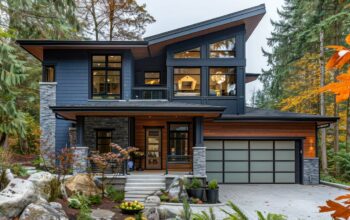There are countless television programs that focus on flipping residential real estate to turn a profit, but many investors don’t realize the financial opportunity involved in flipping commercial properties. Commercial real estate is a different level of investment from residential real estate, involving much higher amounts of money and much greater risk. However, with the right acquisition and the right effort to flip, investors can walk away with much more value.
Learn About Different Types of Commercial Real Estate
Just as there are different types of residential real estate — single-family homes, condos and townhomes, duplexes and triplexes, cooperative housing, etc. — there are different types of commercial real estate, and each type has different requirements when it comes to flipping. Some of the more common types of commercial properties for flipping include:
- Multifamily. Multifamily real estate is residential property with more than one unit.
- Office. As it sounds, commercial office properties are meant to house business operations.
- Retail. Retail real estate is for businesses that sell products or services directly to consumers.
- Hospitality. Hospitality properties are typically temporary residences, like hotels and short-term rentals.
What is as important as the type of commercial property, is the property’s class. Most types of commercial real estate are classified into categories based on their context, meaning their location, their construction quality and other factors that affect the property’s desirability. Generally, Class A properties aren’t useful to flippers because they are already of high quality, and Class C properties can be risky because they are usually not ideally located. Thus, flippers generally want to search for Class B properties, which they can bring up to Class A through renovations.
Create a Network to Use for Property Leads
The more people an investor knows in the real estate industry, the better. Investors should work to spread their name and goal around their market, connecting with as many professionals as possible. It helps to know commercial brokers, of course, but investors should also form relationships with bankers (who will help finance the flip), building contractors (who can provide deals on flipping projects) and other investors (who might be interested in selling or buying a property).
Local business and real estate events tend to be the best places for commercial investors to network. Chamber of Commerce meetings and local gatherings for larger commercial real estate associations are good places to start, but investors can also look on social media for opportunities to get to know important professionals in their market.
Understand How Commercial Valuation Works

The last thing a real estate flipper wants is to waste money, but that is all but guaranteed to happen when investors don’t properly understand how to calculate the value of a property. There are a few different methods of valuing commercial real estate, to include:
- Cost approach, which is the price of property plus any construction costs, assuming optimal use of the land.
- Income approach, which utilizes market rents and resale value of a property to calculate its value.
- Sales comparison approach, which finds the prices of comparable properties that are on the market or that have recently sold.
- Value per gross rent, which is the annual gross rent of a property times the gross rent multiplier, which can be obtained from investor groups in the market.
Flippers need to be able to evaluate properties as they are and as they could be after flipping. Because this process is so important, it is generally a good idea for beginner investors to enroll in a real estate course for better understanding the best tools and techniques for commercial real estate investing. Also commercial renovations are crucial for businesses to adapt, thrive, and provide an optimal experience for employees and customers alike.
Decide the Proper Amount of Flipping
Success in commercial real estate flipping is almost entirely dependent on finding the right property, but putting the right type of work into the property does matter. Because commercial properties tend to be larger, investors should anticipate flips to take longer and cost more than they might expect for a residential flip. Thus, it is critical that investors only put in as much work as necessary to get the return they expect. Researching the market, talking with current and future tenants and working with trustworthy contractors is key to avoiding putting too much work into a property.
Related Posts












